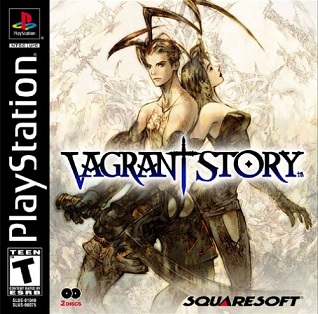
Vagrant Story is an action role-playing game developed and published by Square for the PlayStation video game console. The game was released in 2000 and has been re-released by Square Enix through the PlayStation Network for the PlayStation 3, PlayStation Portable and PlayStation Vita consoles. Vagrant Story was primarily developed by the team responsible for Final Fantasy Tactics, with Yasumi Matsuno serving as producer, writer and director.
Front Mission is a collection of video games and related media produced by Square, now Square Enix. The series was created by Toshiro Tsuchida and developed by G-Craft, a studio that was later absorbed by Square and existed within Square Enix as Product Development Division-6. Since the release of the original Front Mission in 1995, the series has gone on to encompass several media, including film, manga, novels, radio dramas, mobile phone applications, and toys. While the series is primarily rooted in the turn-based tactical role-playing genre, it has also ventured into other genres such as side-scrolling shooter, real-time strategy (RTS), massive multiplayer online (MMO), and third-person shooter through its spin-offs. The Front Mission video games achieved moderate success, selling over 3 million units worldwide up until January 2006.

Drakengard, known in Japan as Drag-On Dragoon, is a 2003 action role-playing video game developed by Cavia and published by Square Enix for the PlayStation 2. The game is the first installment of the Drakengard series and features a mixture of ground-based hack-and-slash, aerial combat, and role-playing elements which have become a staple of the series. The story is set during a religious war between two factions—the Union and the Empire—with the war tipping in favor of the Empire. The player controls Caim, a deposed prince of the Union, in his quest for vengeance against the Empire. Wounded in battle while protecting his sister Furiae, he is forced to make a pact with a red dragon named Angelus as they journey together on a quest to prevent the Empire from destroying magical seals that keep the world in balance.

Front Mission 3, also known in Japan as Front Mission Third, is a tactical role-playing game developed by and published by Square for the PlayStation. It was released in Japan in 1999, and North America by Square Electronic Arts and Europe in 2000. Front Mission 3 is the third main entry and the fifth entry overall in the Front Mission series. Like other Front Mission titles, Front Mission 3 is part of a serialized storyline that follows the stories of various characters and their struggles involving mecha known as wanzers.

SaGa Frontier is a 1997 role-playing video game developed by Square for the PlayStation. The game was published by Sony Computer Entertainment (SCEA) in North America on March 24, 1998. It is the seventh game in the SaGa series, and the first to be released on the PlayStation. It is also the first in the series to be released under the SaGa brand outside Japan; previous overseas releases had used the Final Fantasy brand instead. A remastered version featuring additional characters, events and features was released on April 15, 2021 for Android, iOS, Nintendo Switch, PlayStation 4 and Windows.
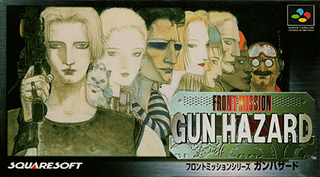
Front Mission Series: Gun Hazard is a 1996 side-scrolling shooter game developed by Omiya Soft and published by Squaresoft for the Super Famicom. It was released only in Japan on February 23. Gun Hazard is the second entry in the Front Mission series and is a side-scrolling shooter with role-playing game elements. The game received an English language fan translation in 2004.
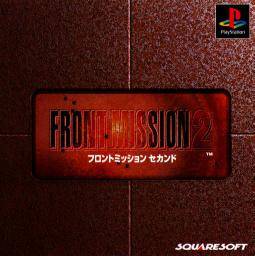
Front Mission 2, also known in Japan as Front Mission Second, is a 1997 tactical role-playing game developed by G-Craft and published by Square for the PlayStation. It was released only in Japan on September 25, 1997. It is the second main installment and the third entry overall in the Front Mission series. Like other Front Mission titles, Front Mission 2 is part of a serialized storyline that follows the stories of various characters and their struggles involving mecha known as wanzers. The game was well received by critics and fans, and was part of Square Enix's "Ultimate Hits" collection in 2005.

Dawn of Mana is a 2006 action-adventure game for the PlayStation 2. It was developed and published by Square Enix. It is the eighth game of the Mana series and the third entry in the World of Mana subseries, following the release of Children of Mana nine months prior and Friends of Mana two months prior. Set in a high fantasy universe, Dawn of Mana follows a young hero, Keldric, as he journeys to close a portal to a land of darkness that has been opened in the base of the Tree of Mana and is corrupting the world.

Front Mission 4, also known in Japan as Front Mission Fourth, is a tactical role-playing game developed and published by Square Enix Co., Ltd. as the fourth main entry and sixth entry overall in the Front Mission series. Like other Front Mission titles, Front Mission 4 is part of a serialized storyline that follows the stories of various characters and their struggles involving mecha known as wanzers.

Front Mission 5: Scars of the War, also known in Japan as Front Mission Fifth: Scars of the War, is a tactical role-playing game developed and published by Square Enix, released in Japan on December 29, 2005. Front Mission 5: Scars of the War is the fifth main entry and ninth entry overall in the Front Mission series. Like other Front Mission titles, Front Mission 5: Scars of the War is part of a serialized storyline that follows the stories of various characters and their struggles involving mecha known as wanzers.

Dragon Quest Swords: The Masked Queen and the Tower of Mirrors is a role-playing video game developed by Genius Sonority and Eighting and published by Square Enix for the Wii game console. The game is a spin-off from the Dragon Quest series, and was first released in Japan in July 2007, and worldwide the following year.

Final Fantasy XV is a 2016 action role-playing game developed and published by Square Enix. The fifteenth main installment of the Final Fantasy series, it was released for the PlayStation 4 and Xbox One in November 2016, Windows in March 2018, and as a launch title for Stadia in November 2019. The game features an open world environment and action-based battle system, incorporating quick-switching weapons, elemental magic, and other features such as vehicle travel and camping. The base campaign was later expanded with downloadable content (DLC), adding further gameplay options such as additional playable characters and multiplayer.

Front Mission is a tactical role-playing game developed by G-Craft and published by Square, and was released in Japan on February 24, 1995, for the Super Famicom. Front Mission is the first main entry and the first entry overall in the Front Mission series. Front Mission is part of a serialized storyline that follows the stories of various characters and their struggles involving mecha known as wanzers. A direct port of the game was released for the WonderSwan Color in Japan on July 12, 2002.

The 3rd Birthday is a role-playing shooter developed by HexaDrive and published by Square Enix for the PlayStation Portable. It was released in Japan in 2010 and in North America and Europe in 2011. The game is the third entry in the Parasite Eve video game series, based on the titular Japanese novel, and a spin-off, having only a loose connection to events from past games. The game features a third-person shooter-based combat system with role-playing mechanics. A key mechanic is the Overdive ability, which allows the player to possess pre-positioned human allies and inflict damage upon enemies.
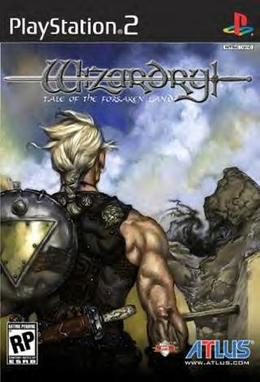
Wizardry: Tale of the Forsaken Land is a 2001 PlayStation 2 role-playing video game and a spin-off of the Wizardry series, published by Atlus.

Front Mission Evolved is a third-person shooter video game developed by Double Helix Games and published by Square Enix. Unlike previous Front Mission titles which have a tactical role-playing game structure, players engage in combat in real time on 3D maps using giant robotic weapons of war known as "Wanzers." The game also features a single player story mode and several multiplayer combat modes with up to eight players.

Lufia: Curse of the Sinistrals, released as Estpolis: The Lands Cursed by the Gods (エストポリス) in Japan, is an action role-playing game video game co-developed by Neverland and Square Enix for the Nintendo DS. It is a remake of the 1995 Super Nintendo Entertainment System game Lufia II: Rise of the Sinistrals, also developed by Neverland. The character re-designs are by former Square Enix character designer, Yusuke Naora.
Front Mission is a series of tactical role-playing games produced by Square Enix. The music of the series includes the soundtracks to the main series, composed of Front Mission through Front Mission 5: Scars of the War, as well as the spin-off games, which include Front Mission Series: Gun Hazard, Front Mission Alternative, Front Mission: Online, Front Mission 2089 and its remake Front Mission 2089: Border of Madness, Front Mission 2089-II, and Front Mission Evolved. The soundtracks of the series' installments have been released in album form in Japan, with the exceptions of 2089, 2089-II, and Border of Madness, which reuse music from the other installments, and Evolved, which was published in 2010. The soundtrack to Front Mission was released in 1995 by NTT Publishing, which also published the soundtrack to Front Mission: Gun Hazard in 1996. DigiCube published soundtrack albums for Front Mission 2 and Alternative in 1997 and 3 in 1999. Square Enix published the albums for Front Mission 4 in 2004, and 5 and Online in 2006.

Front Mission 2089 is a tactical role-playing game developed by Square Enix Co., Ltd., MSF, and Winds, and was published and released in Japan by Square Enix Co., Ltd. in 2005 and 2008 for mobile phones. The game was released on March 7, 2005, October 27, 2005, and June 18, 2008. Front Mission 2089 is part of Front Mission Mobile, a project dedicated to Front Mission video games for the mobile phones. Front Mission 2089 is the fifth main entry and the seventh entry overall in the Front Mission series. Like other Front Mission titles, Front Mission 2089 is part of a serialized storyline that follows the stories of various characters and their struggles involving mecha known as wanzers. An enhanced remake of the game developed by h.a.n.d. was released for the Nintendo DS on May 29, 2008, titled Front Mission 2089: Border of Madness. A sequel, Front Mission 2089-II, was released for mobile phones in Japan in 2006 and 2008 for i-mode and EZweb services, respectively, continuing the story following a new main character.
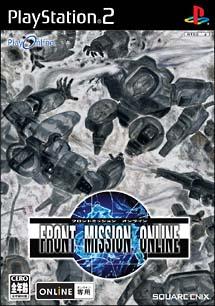
Front Mission: Online was a massively multiplayer online (MMO), third-person shooter video game developed by and published by Square Enix, and was released in Japan on May 12, 2005 for the PlayStation 2, and on December 8, 2005 for Windows. Like other Front Mission titles, Front Mission: Online is part of a serialized storyline that follows the stories of various characters and their struggles involving mecha known as wanzers. The game's servers were closed on May 31, 2008.

















